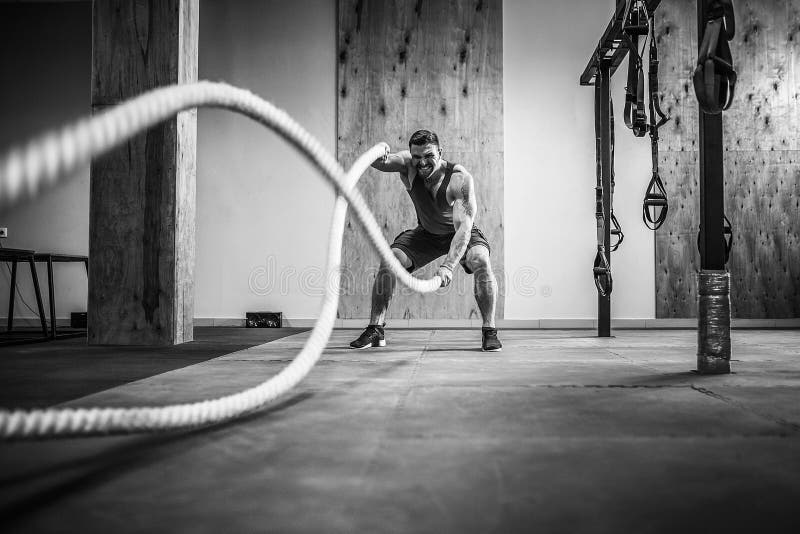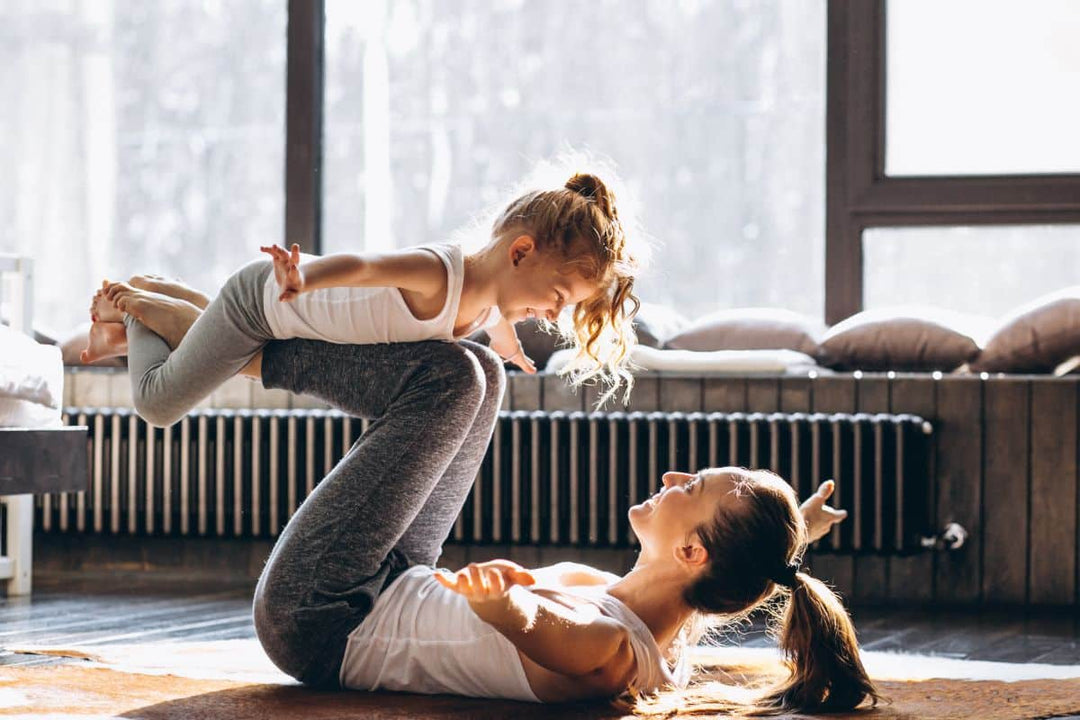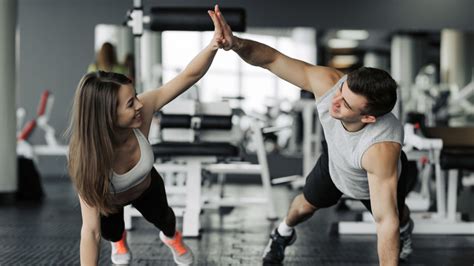Picture this: you're hitting the gym regularly, watching what you eat, and doing everything you're supposed to, but still not seeing the results you want. Sound familiar?
Getting there isn't always easy. It's a journey with many ups and downs, where we try different workouts, diets, and whatever else is trendy. All in the quest for that elusive 'perfect body.'
But have you heard of the Golden Ratio? It’s a concept that's been around for centuries, offering a way to structure our efforts and achieve a more visually appealing physique.
So, let’s explore how the Golden Ratio can be a game-changer in your journey to sculpting the body you've always wanted to achieve. Let's dive in!
Understanding the Golden Ratio
For ages, people have been fascinated by the golden ratio. Also known as the divine proportion, it is a mathematical concept that has fascinated mathematicians, artists, architects, and thinkers for millennia.
The golden ratio is typically represented by the Greek letter phi (φ) and is defined as a ratio of 1:1.618.
This means that when a line is divided into two parts and the whole length (A+B) is to the length of the longer part (A) as the length of the longer part (A) is to the length of the shorter part (B), you get a ratio of 1:1.618.
Mathematically, this can be expressed as:
A+B / A = A / B = 1.618, where A and B represent line segments of different lengths.
The golden ratio is actually an ancient concept that goes way back to ancient Greece, around 300 BC. Euclid, a mathematician, talked about it in his book Elements.
But, some say that the golden ratio was already known and used even earlier than that in ancient Egypt and other places too.
Throughout history, the golden ratio has become influential in mathematics, art, architecture, and design.
For example, The Parthenon in Athens and Leonardo Da Vinci's paintings have measurements that are super close to the golden ratio, thought to be aesthetically pleasing to the eye.
It is also found frequently in geometry, appearing in many symmetrical shapes and spiral patterns in nature, like seashells, flowers, and even human DNA.
The golden ratio has some unique math properties that make it show up in lots of different places.
It's a really nice way to make things look balanced and proportional, making it a valuable tool for artists and architects.
What's even cooler is that the more people use the golden ratio, the more we learn about how math, nature, and beauty all fit together.
Applying the Golden Ratio to the Male Body
The Golden Ratio has been found to align closely with proportions considered ideal for the male physique.
Specifically, some studies have shown that the Golden Ratio can be observed in certain measurements of the male body.
- Shoulder-to-waist ratio - The shoulder circumference divided by the waist circumference should be close to 1.6, following the Golden Ratio. Broad shoulders and a narrow waist are considered attractive in men.
- Upper torso to leg length - The length of a man's torso compared to his total height should be about 1.6, per the Golden Ratio. Longer legs and a shorter torso are seen as ideal.
- Chest-to-waist ratio - A man's chest circumference divided by his waist circumference should also approximate 1.6 based on the Golden Ratio principle. A broad chest paired with a slim waist creates a masculine V-shape.
Golden Ratio for Men: Perception of Beauty
In addition, the Golden Ratio has been found to influence perceptions of the attractiveness of the male face and body shape.
Adrian Bejan, a professor of mechanical engineering at Duke University, sheds light on the innate connection between the Golden Ratio and our visual perception.
“It is well known that the eyes take in information more efficiently when they scan side to side, as opposed to up and down. When you look at what so many people have been drawing and building, you see these proportions everywhere.”
He also supports the application of the Golden Ratio to male physical features.
“Shapes that resemble the golden ratio facilitate the scanning of images and their transmission through vision organs to the brain.”When we see the proportions in the golden ratio, we are helped. We feel pleasure and we call it beauty."
However, not everyone subscribes to the notion of the Golden Ratio as the ultimate arbiter of beauty. Astrophysicist Dr. Mario Livio, author of "The Golden Ratio: The Story of Phi, the World's Most Astonishing Number," challenges the widespread adoption of the Golden Ratio as a universal standard for beauty.
“In spite of the Golden Ratio's truly amazing mathematical properties, and its propensity to pop up where least expected in natural phenomena, I believe that we should abandon its application as some sort of universal standard for "beauty," either in the human face or in the arts.”
Yet, amidst these debates, one thing remains clear: everyone wants to look good and feel beautiful.
That's why we still strive to achieve the perfect Golden Ratio proportions. Whether it's about having a model's sharp features or designing a beautiful building, we all want to create something that looks amazing and resonates deeply with our understanding of beauty.
How to Achieve the "Grecian Ideal"
The "Grecian Ideal" refers to a concept of the aesthetically perfect male body inspired by ancient Greek artistic representations of the male form. To get this ideal male body, you need to have a well-built and symmetrical body. This concept is closely related to the Golden Ratio.
Establishing Reference Points for Measurements
The key characteristics of the Grecian Ideal physique are:
- Broad, muscular shoulders tapering down to a narrow waist. The shoulder-to-waist ratio should ideally align with the Golden Ratio.
- Arms that are muscular and defined, but not overly bulky. The upper and forearm should try to match the proportions of the Golden Ratio.
- Muscular, well-developed chest that creates a sculpted, "v-shaped" upper body.
- Lean and muscular legs. The thighs and calves should be muscular but not excessively bulky. Their proportions should align with the Golden Ratio.
- Having minimal body fat and visible muscles is another goal. Overall a symmetrical, proportional physique that aligns with the mathematical ideals of the Golden Ratio.
The Grecian Ideal is about having a well-balanced and proportionate body rather than just bulking up certain muscles. It represents the historically-established "perfect male body" based on mathematical ideals and artistic expression.
It's not easy to achieve, but it's a good goal for men who want to have a fit and balanced physique.
Measuring Body to Assess Grecian Ideal
Are you curious to know how closely your body matches the proportions of the Grecian Ideal? You'll need to measure some key parts of your body accurately to calculate the ratios between them.
Some important tools for taking body measurements are:
- Flexible measuring tape - Gives circumference measurements of arms, thighs, chest, waist, etc. Make sure to keep it level and snug, but not too tight.
- Calipers - Measure fat thickness at targeted spots like abdomen or thighs. Pinch the skin firmly before clamping caliper.
- Body scanner - Uses 3D imaging to get highly precise measurements. Can be found at high tech gyms or medical facilities.
When measuring, make sure to:
- Stand straight with arms at sides and feet together. Relax your muscles!
- Take measurements on the right side of the body. Be consistent across sessions.
- For length, measure from the center of joints. Use bony protrusions as markers.
- Record each measurement 2-3 times and average for accuracy.
Some key proportions to aim for in the Grecian Ideal:
- Shoulder to waist ratio: 1.6
- Upper arm to forearm ratio: 1.618
- Chest to waist ratio: 1.6
- Quadriceps to hamstrings ratio: 1.6
Keeping these perfect ratios can help you achieve a body that looks like the ones in the classical Greek sculptures.
But don't forget, your genes and body structure have a big role to play, too. If your ratios aren't exactly the same, don't let that discourage you.
How Close Can You Get to the Grecian Ideal (And Should You)?
Everyone's body is different when it comes to building muscle and getting the ideal male body. There are some important things that affect how much muscle you can gain naturally:
Genetics
Your genes play a big part in deciding how much muscle you can put on. Your body's ability to build muscle is influenced by your genes, which determine how well your body turns protein into muscles and produces testosterone.
If you have good genes, you'll build more muscle than others, even if you're following the same workout and diet plan.
There's no way to change your genes, so it's always better to set achievable goals that match your genetic potential.
Height
Your height also affects your ability to build an ideal physique. If you're tall, you might have an easier time getting wider clavicles and a larger frame size.
But if you're on the shorter side, you might have to focus more on getting the right proportions for your limbs instead of just trying to gain overall mass.
Everyone's body is unique, and with the right approach, you can reach your fitness goals, no matter your height!
Body Weight
Your starting body weight and composition also affect how much muscle you can build.
If you're starting with a leaner body, you have more potential to gain mass compared to someone who starts out overweight.
Take your current weight and subtract your body fat percentage to estimate your lean mass. This can give you an idea about your natural muscle-building limit, which is about twice your lean body mass at 10% body fat.
Bone Structure
Your bone structure, particularly wrist and ankle girths, also indicates your natural muscular potential.
Just measure both wrists and ankles and get an average of the two measurements. Then compare it with the standard size charts to know if you have small, medium or large bone structure.
If you have larger bone structure, it means you have more capacity for muscle growth. This way, you can estimate your natural muscular potential and set achievable goals to get that Grecian physique you desire.
Setting Realistic Goals
If you want to get that perfect Grecian body, then aim for realistic goals that suit your body's structure and genetic potential.
Instead of following strict measurements, it's better to set achievable targets that are custom-made for your unique body type.
While working hard at the gym is great, there's only so much you can do to achieve the "perfect" proportions of 1:1.618.
Your genetics can play a big role in determining things like muscle insertions, shoulder width, limb length, and even natural testosterone levels, which can limit how much progress you can make.
It's important to accept your body's limitations and train within your capabilities to avoid getting frustrated or developing unhealthy training habits.
Rather than comparing yourself to fitness models with premium genetics, aim to become the best version of yourself.
Focus on objective measurements of progress like increased strength, cardiovascular health, flexibility and overall well-being.
The Grecian ideal can serve as an aesthetic target, but your self-improvement should always remain your ultimate goal.
The Best Workouts to Achieve Your Ideal Body Proportions
Ready to transform your physique and work towards your dream body? Here are the best workouts that can help you achieve your desired body shape.
Focus on Compound Movements
Compound exercises like squats, deadlifts, and bench presses are crucial for building the ideal male body that aligns with the Golden Ratio.
These exercises use multiple joints and muscle groups, which helps to build symmetrical proportions much more effectively than isolation exercises.
So, if you want to get closer to that Grecian aesthetic ideal, make sure you have a workout plan that centers around heavy compound lifts.
Balanced Approach
When you work out, make sure you're hitting all the major muscle groups, such as chest, back, shoulders, arms, and legs. Don't go overboard on one area and forget about the others. You want a balanced look.
Plus, if you're going for that Golden Ratio body, you gotta keep everything proportional and symmetrical. So mix it up and work all around your body!
Exercises You Should Try
Just to give you a balanced approach, here are some detailed guides on how to do some of the best compound exercises that can help you achieve overall proportional development:
Bench Press
So, do you want to work on your chest and arms? Try bench press! It hits those pecs, front delts, and triceps, and if you do it right, you can get some serious chest gains for a killer upper body.
- Plant feet firmly on the floor, with knees bent at 90 degrees.
- Keep your back pressed against the bench with your shoulders pulled down and back. Do not arch your back excessively.
- Grip the bar just outside shoulder-width with an overhand grip.
- Slowly lower the bar to mid-chest, then drive back up through the heels to complete the rep.
- Avoid bouncing the bar off the chest or lifting just with arms. Keep everything tight.
This workout move helps you get that 'V' shape upper body by bulking up your chest muscles.
Deadlifts
Deadlifts work the entire posterior chain - lower back, glutes, hamstrings, and calves. You have to nail them if you want to build a symmetrical, proportional lower body.
- Stand with feet shoulder-width apart and bar over midfoot. Bend knees until shins touch bar.
- Maintain a flat back in neutral spine by hinging from the hips. Do not round the back.
- Grip bar just outside legs and take slack out of arms.
- Drive through heels and extend hips forward to stand up, keeping bar close to body.
- Squeeze glutes at the top of movement. Return by hinging from hips again.
Deadlifts are great for strengthening your back muscles and achieving an overall balanced and aligned body with the Golden Ratio.
Pull-ups/Chin-ups
- Use an overhand grip for pull-ups to better activate the lats. For chin-ups, utilize an underhand grip to place more emphasis on the biceps.
- Focus on controlled form, avoiding swinging or improper technique. Pull until your chin clears the bar, then lower with control.
If you are looking for exercises to build a strong and wide back along with bicep development, pull-ups and chin-ups are great options. These exercises target the big muscles on your back called latissimus dorsi, and also work your biceps.
Shoulder Press
- When performing shoulder presses, sit or stand upright and keep the core braced. Press the weights directly overhead, keeping the elbows facing forward.
- Lower the weights with control, being careful not to hyperextend the elbow joint. Full range of motion is key.
If you wanna get those broad shoulders, then you better start doing the shoulder press. It's a key exercise for developing those deltoid muscles that make your upper body look wider and more defined.
Additional Isolation Exercises
- Incorporate isolation exercises like lateral raises, tricep extensions, and bicep curls to target smaller muscle groups.
- Vary grip positions and angles to fully work all areas of each muscle group.
- Focus on mind-muscle connection and proper form over heavyweight.
To get the Grecian physique ideal, it's important to have a well-rounded workout plan that includes compound exercises and isolation exercises. Make sure you stick with it and focus on good form. Consistency is key!
Key Takeaway
The Golden Ratio and Grecian Ideal can help guys achieve a good-looking body.
While useful as a benchmark, achieving the exact ideal male body can be challenging because it varies with genetics and other individual factors. The key is to understand your body type and potential and set practical goals.
Striving for the ideal physique should not come at the cost of health, self-esteem or mental wellbeing.
Keep a balanced fitness and nutrition plan and don't stress over the exact measurements. Focus on being strong and active.
Only a few guys can achieve the perfect Golden Ratio proportions. So be realistic and work with what you've got.
Don't get hung up on your genetic limitations. Appreciate your unique traits and keep working to be your best self, both mentally and physically.





